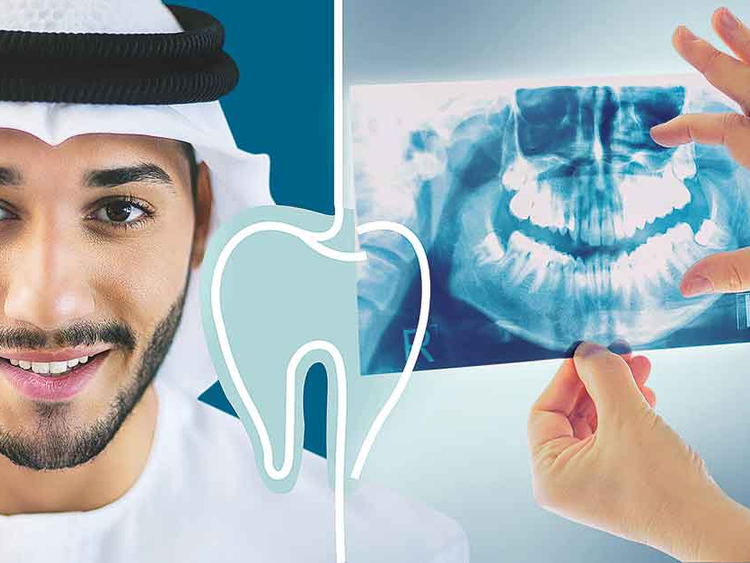A first of its kind study in the UAE found that there are no statistically significant differences between the permanent teeth of Emiratis and those of Caucasian populations, such as North Americans. The study was aimed at measuring the upper and lower teeth of Emiratis in order to better diagnose and create a treatment plan for orthodontic therapy in Dubai.
Dr Moza Mohammad, specialist orthodontics, at the Primary Healthcare Sector, Dubai Health Authority (DHA), said a total of 521 dental casts were taken from Emirati patients (188 males and 333 females) at the orthodontic clinics of the DHA, to conduct the study.
Dr Mohammad explained that the tooth size analysis is defined as the degree of disproportional relationships between upper and lower teeth (in total or anterior) often called Bolton analysis. It is performed by measuring the mesiodistal width of each permanent tooth, excluding 2nd and 3rd molars.
She added that patients with inter-arch tooth size discrepancies typically require special finishing steps and that Bolton analysis can accurately and reliably be performed in scanned digital models.
Since teeth characteristics vary between ethnic and race groups, Dr Mohammad said it was important to identify them for the Emirati population. “The aim of the study is to measure the overall and anterior tooth size ratios in a group of Emiratis with Class I normal occlusion, and to estimate overall and anterior tooth size ratios in different malocclusion groups of Emiratis,” she said. “It will also help compare overall and anterior tooth size ratios of Emiratis with the Bolton standards and determine the distribution of overall and anterior tooth size ratios from Bolton mean values in all occlusion groups of Emiratis.”
Dr Mohammad said conducting this analysis on Emiratis is of significance because there is no existent relevant data available and so it would be valuable to investigate the overall and anterior tooth size ratios in a group of Emiratis.
To conduct the study dental casts were scanned using Ortho Insight 3D laser scanner and digitised using the 3D Motion View software.
The results found that when comparing the overall and anterior tooth size ratios between the samples of Emiratis with Class I normal occlusion and the Bolton standards, no statistically significant differences were found.
In conclusion, Dr Mohammad said, “Our findings indicated that there are no differences between the dimensions and relationships of the permanent teeth of Emiratis and those of Caucasian populations such as North Americans, for which diagnostic standards have been developed and used in our profession many years ago.”
This means that the existing relevant diagnostic tests can be used for the Emirati local population without any adjustment or adaptation. This will help in the diagnosis and treatment planning for orthodontic therapy (braces) of the people in the UAE.
Dr Mohammad presented her study at the 93rd Congress of the European Orthodontic Society, one of the very well-known scientific events, which took place during June 5-10, 2017 in Montreux, Switzerland.
Study objectives
1. To study overall and anterior tooth size ratios in a group of Emiratis with Class I normal occlusion.
2. To estimate overall and anterior tooth size ratios in different malocclusion groups of Emiratis.
3. To compare overall and anterior tooth size ratios of Emiratis with Class I normal occlusion with the Bolton standards.
4. To determine the distribution of overall and anterior tooth size ratios 2 SD from Bolton mean values in all occlusion groups of Emiratis.
The null hypotheses are set as: There are no differences between mean values of overall and anterior tooth size ratios in a group of Emiratis with Class I normal occlusion and the Bolton standards, between different malocclusion groups and in distribution of overall and anterior tooth size ratios 2 SD from Bolton mean values in all occlusion groups.












